THE 2023 COMEL AWARD FINALISTS
Alessandra Rovelli
Rivolta d’Adda (CR), ITALY
www.alessandrarovelli.it
www.alessandrarovelli.it
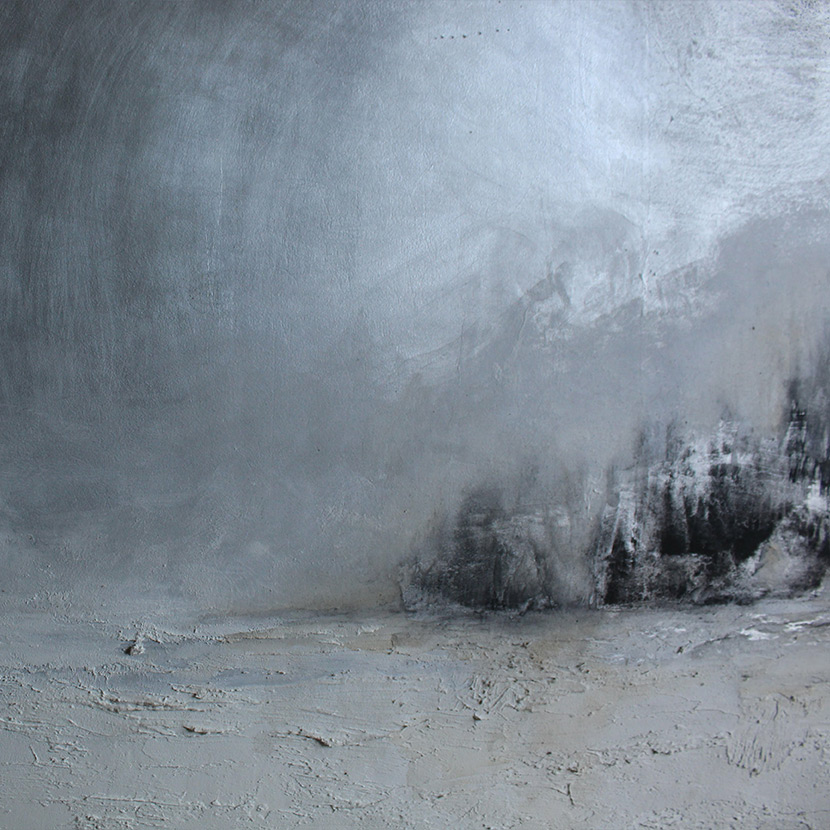

THE 2023 COMEL AWARD FINALISTS
Alessandra Rovelli
Rivolta d’Adda (CR), ITALY
www.alessandrarovelli.it
www.alessandrarovelli.it
BIOGRAPHICAL NOTES
Born in Rivolta d’Adda (CR) where she currently lives and works, she draws inspiration from the continuous merging of the boundary between sky and earth, in ethereal atmospheres. She has studied the landscape throughout her life to capture its scents and narrate its stories. During her training as a ceramic technician and at the Brera Academy of Fine Arts, she developed a strong interest in materials and their versatility. Her focus is particularly on the tactile component achieved through the layering of natural materials such as charcoal, ashes, or barren earth.
ARTWORK IN CONTEST
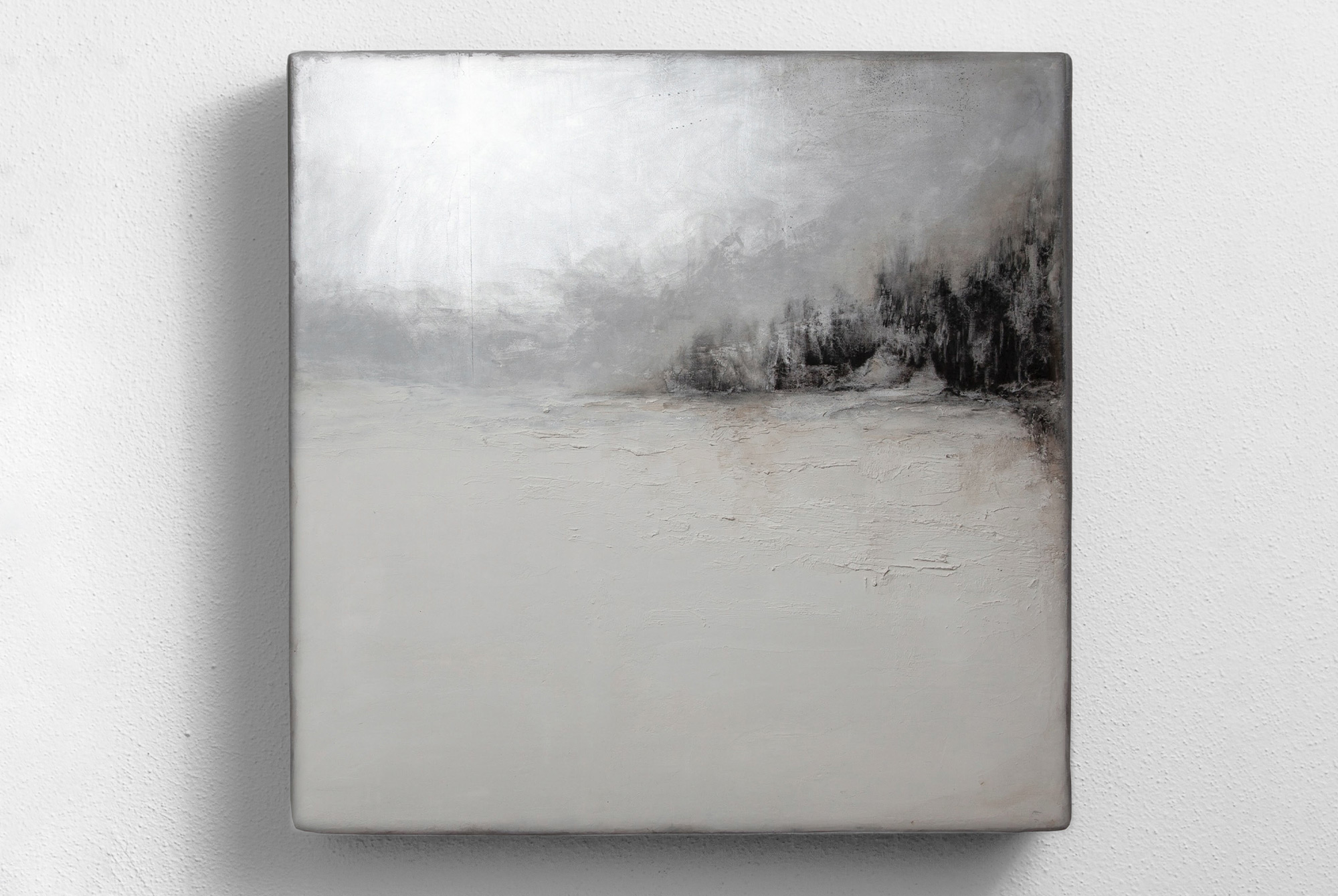
IL SENSO MUTEVOLE DEL NOSTRO ANDARE, 2021
PAINTING - Mixed media with aluminium foil and charcoal on canvas glued to a cardboard box
cm 72 x 72 x 10
Born in Rivolta d’Adda (CR) where she currently lives and works, she draws inspiration from the continuous merging of the boundary between sky and earth, in ethereal atmospheres. She has studied the landscape throughout her life to capture its scents and narrate its stories. During her training as a ceramic technician and at the Brera Academy of Fine Arts, she developed a strong interest in materials and their versatility. Her focus is particularly on the tactile component achieved through the layering of natural materials such as charcoal, ashes, or barren earth.
AWARDS
WINNER OF THE COMEL AUDIENCE AWARD 2023

by Dafne Crocella
The attention I pay to the choice of material with which I paint stems from the desire to have no filters and to elect the material that I am going to represent as the work's protagonist.
With the work Il Senso Mutevole del Nostro Andare (The Shifting Sense of Our Going), you won the Audience Award of the 10th Edition of the Comel Award with widespread acclaim. So many young people appreciated it, and so many comments were left. What feeling did this recognition give you? Have you already noticed how the audience pleasantly perceived your work?
I had the pleasure of meeting many of the young people who had voted for the work during the award ceremony and even felt the urge to leave a comment. They shyly approached me to confide their preference and to exchange a few words about it. I cannot but be flattered, even moved by reading specific passages and knowing that I conveyed the expressive force I tried to give the work.
I have always liked to engage with the audience about the feelings they have when looking at my works; it is curious to know their interpretation, what triggers each one of my landscapes, sometimes they are memories, sometimes emotions, sometimes questions about the places represented or the history they hold.
"The work strikes, right from the first glance, with an expressive force that makes you lose yourself in the barren expanse of its landscape. It is a magnetic and lonely world that leaves no escape to the viewer's eye, mind, and heart." And then again, "A lake landscape with smoky outlines and the game of illumination made of light and dark that immediately captures not only the viewer's gaze but also his imagination." These are just some of the comments of visitors to the exhibition. A magnetic power emerges that leads observers to immerse themselves in the work, almost allowing themselves to be swallowed up by the landscape. Is the desire to create places of escape already present in your creative intent? Or do they emerge once they meet the viewer?
The landscapes I paint are often places-non-places or compositions I invented to convey a particular atmosphere. Sometimes, I take inspiration from the real world, trying to fix the feeling that struck me. Regardless of what inspires me, I believe that my art-making is a form of evasion for me and, from what I perceive through my confrontation with the public, I believe that this also happens in those who observe my works: I think it is the power of art with its ability to transport us elsewhere, often to inner places from which to draw well-being and desire for escape.
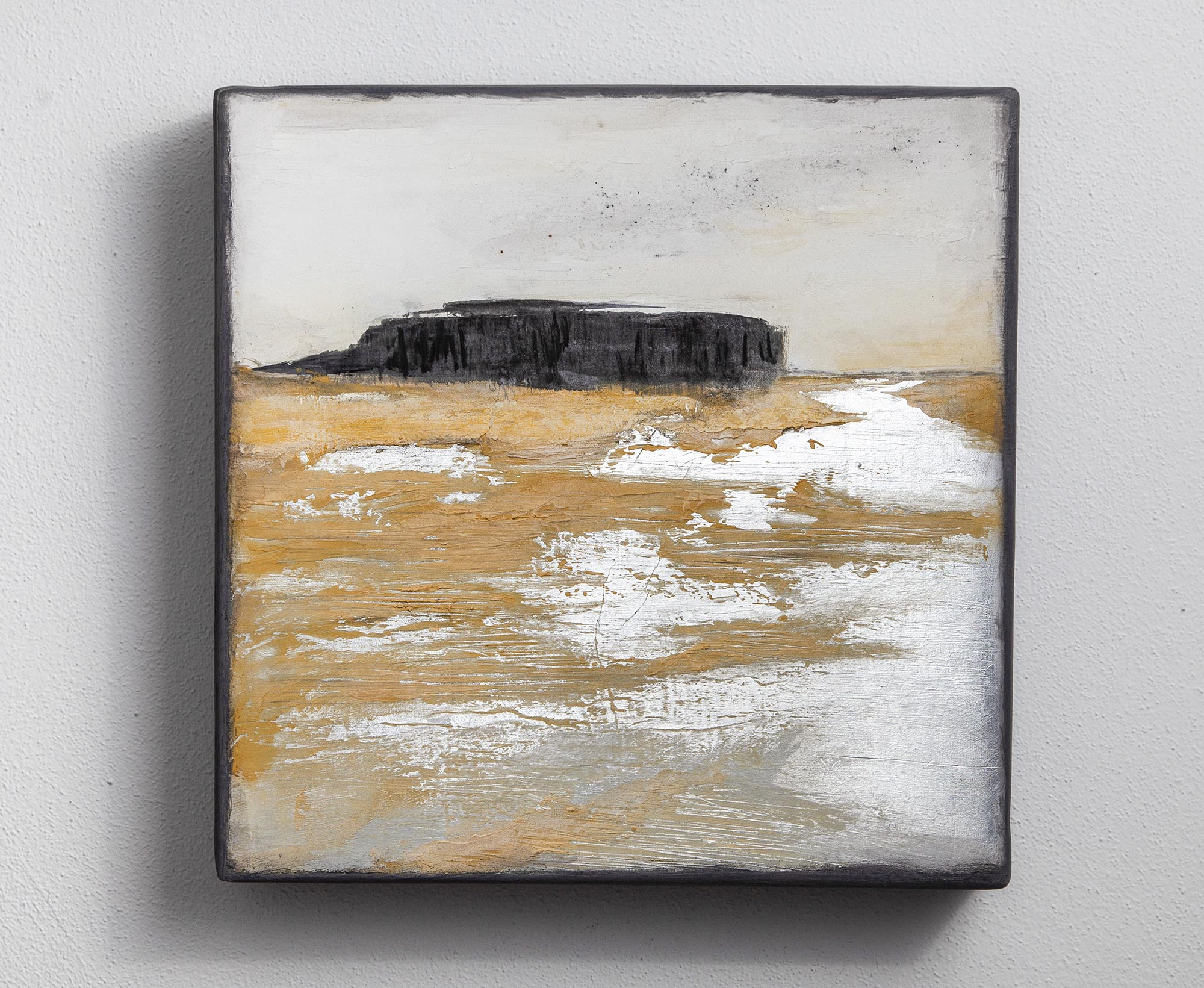
Luccica sparso il vento
The theme of this edition of the Competition is dedicated to experience. How do you feel your work has met this theme? The title refers to a "going," a proceeding that unites humankind. In what ways do you consider this "moving along"? Is this part of the sense of "experience" that characterizes human lives?
It wanders and digresses the eye between the expanse of snow and the curtain of charcoal-colored trees.
Mysterious presences to circumvent or safe haven in which to find shelter?
And again, where does infinity continue beyond the horizon?
In man's individuality lies the answer.
Everyone's ability to stand in front of a work and draw different meanings from it, depending on one's feelings, causes the work itself to transmute into something other than itself.
Beyond the forest, characterized by mysterious presences painted with charcoal, a changing and iridescent sky opens up precisely because of the very nature of the material with which it is made: aluminium.
Due to the reflection of light, and depending on the position from which one looks at the work, one perceives a different picture. A metaphor for the diversity, changes, and different visions that inhabit the human soul in all its experiences.
Your artistic research moves primarily on landscapes. It is a difficult choice that risks overlapping with so much art that has preceded us. Yet, in your work, you find a unique, authentic trait that reaches the viewer without the need for rational mediation and breaks down superstructures, presenting itself as contemporary and, at the same time, inherent. How much has the environment in which you live, the Po Valley with its lands, its mists, and its vast skies, influenced this research? And how much does your work inherit from other artists' gaze on these lands?
Growing up and living in the Po Valley means being part of a community that has always had to deal with flat and boundless horizons, with endless expanses of land as far as the eye can see to cultivate, with my beloved fog that envelops everything with charm, and with small and large streams that can twist the landscape to their liking. The subjects I paint, however, go beyond the geographical boundaries of the places where I grew up and are inspired by landscapes that I may have seen in person or, more simply, in photographs.
Indeed, I cannot remain insensitive to the great fascination of nature in all its beauty and the paintings of artists throughout the centuries who have contemplated the immensity of nature in its most primal and intense aspects.
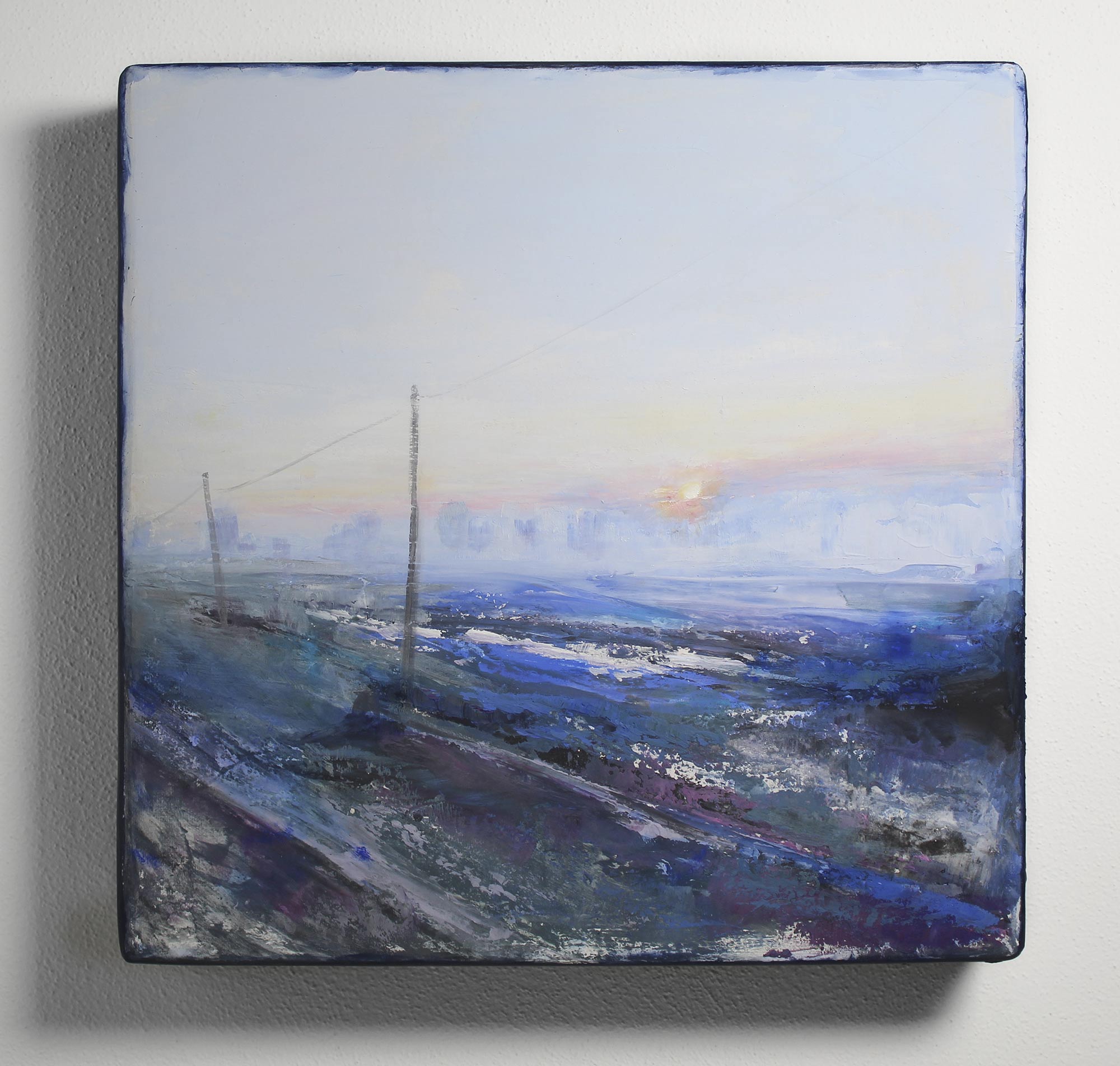
Piccole promesse mantenute
You called your works Life-Boxes because what might look like canvases are cardboard boxes covered with canvas and treated with your own technique. Each box, with its previous history as a bearer of objects, is thus transformed into a bearer of stories. Through your landscapes, natural as well as urban, the boxes maintain their function of preserving, protecting, and carrying contents this time immaterial. Where did this idea come from? How has it developed over time, and how do you feel it is being perceived?
The idea of using cardboard boxes as a support to which I apply canvas stems from the need to give a more complete identity to my works. In my painting making, constant research regarding materials and their peculiarity has always played a fundamental role.
The moment I felt the urgency to include the conceptual aspect also in the support, the transition from the frame to the box was natural precisely because of the box's meaning within itself.
I sense a particular curiosity on the part of those who enjoy my works about the particularity of my medium. In general, they seem to appreciate the idea.
To emphasize the boxes' theme as the bearer of a story or message, you add paper messages to your works that are sealed inside the boxes and, therefore, cannot be read, but you can feel their presence by moving the work. What kind of messages do you commit to your Life Boxes?
Enclosed within the work, I insert a scroll on which I handwrite a short poem or thought composed by me and inspired by the symbolic meaning I attribute to the landscape.
I like to think that, as if in a silent and silent conversation, those who will enjoy the work will imagine their sentence written and kept inside the box, a thought arising from their considerations and emotions about the subject represented.

Non ti conosco, 2019
A focus on the use of materials characterizes your work. In representing a landscape, you love to use the materials that make it up. As if tacit complicity is established between your hand and that of nature, the soils, with their grains and doughiness, go to trace and return their chromaticism to the image of lands. The coals obtained from burnt woods shape the trunks of trees...what relationship do you feel is established between matter and image, both concerning the natural world and in your expressive research? Are there artists who have influenced you in these material choices?
The attention I pay to the choice of material with which I paint stems from the desire to have no filters and to elect the material that I am going to represent as the work's protagonist.
I think it was fundamental for my painting to have deepened, during my formative years, the study of two artists I have always respected: Alberto Burri and Anselm Kiefer. Both used unusual materials and natural elements in their paintings that brought a sense of fragility but also an exaltation of the material and the symbolism concealed in them.
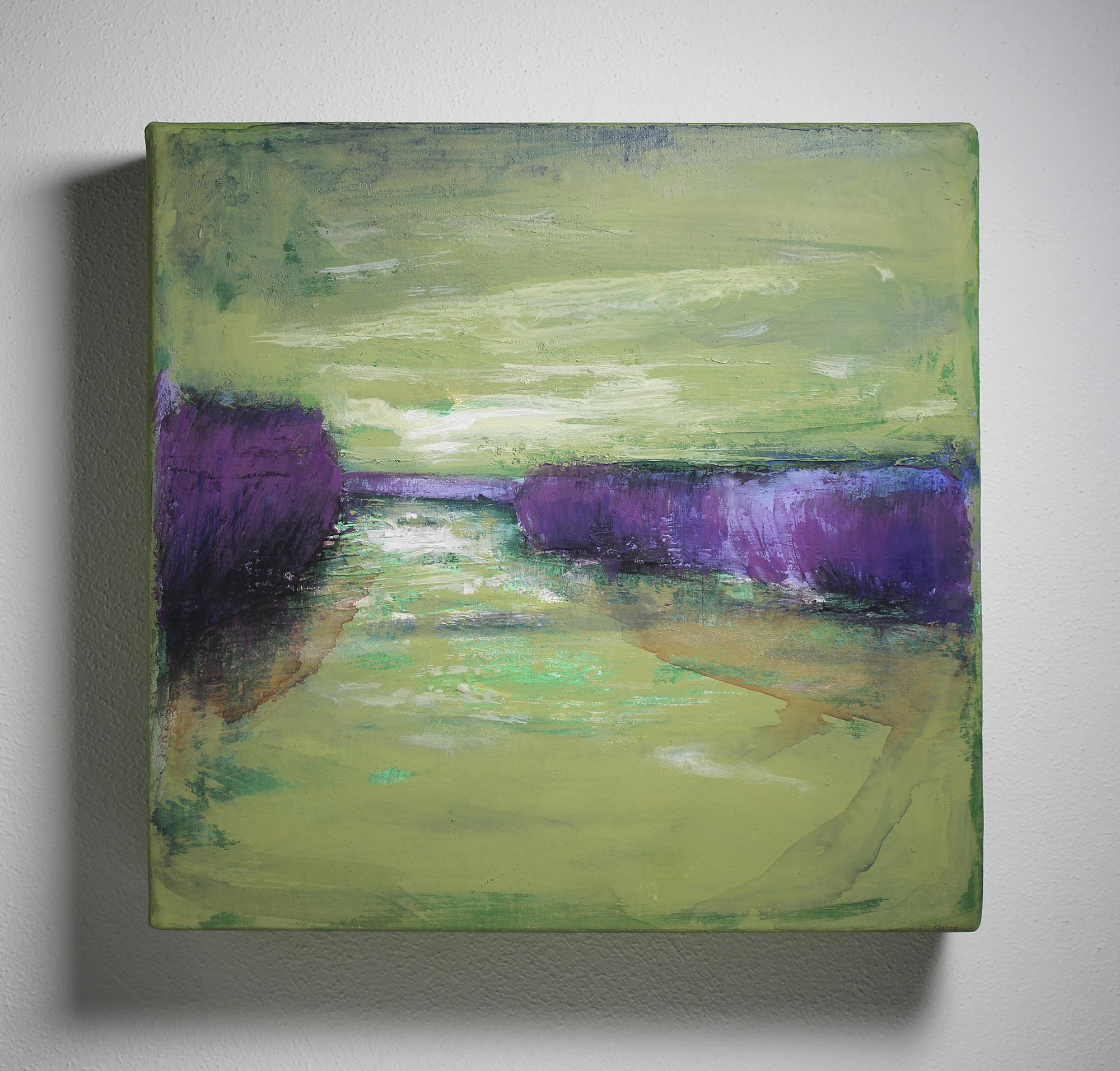
In bilico tra due cuori, 2023
The use of aluminium has frequently returned in recent works. What characteristics do you find in this material?
Aluminium allows light to become part of the work in a bursting and unique way.
The very thin layer of aluminium that I make adheres perfectly to the support, taking on every single texture and crack of the underlying surface, becoming one with it thanks to its extreme flexibility.
My interest in such a fascinating metal began precisely because of the Comel Award 2020 edition. In fact, for the next six months, I carried on an experiment that gave me optimal results. Thus, a series of works was born in which aluminium became a co-protagonist along with the graininess of the textural surface and the peculiarity of the natural elements I employ.

